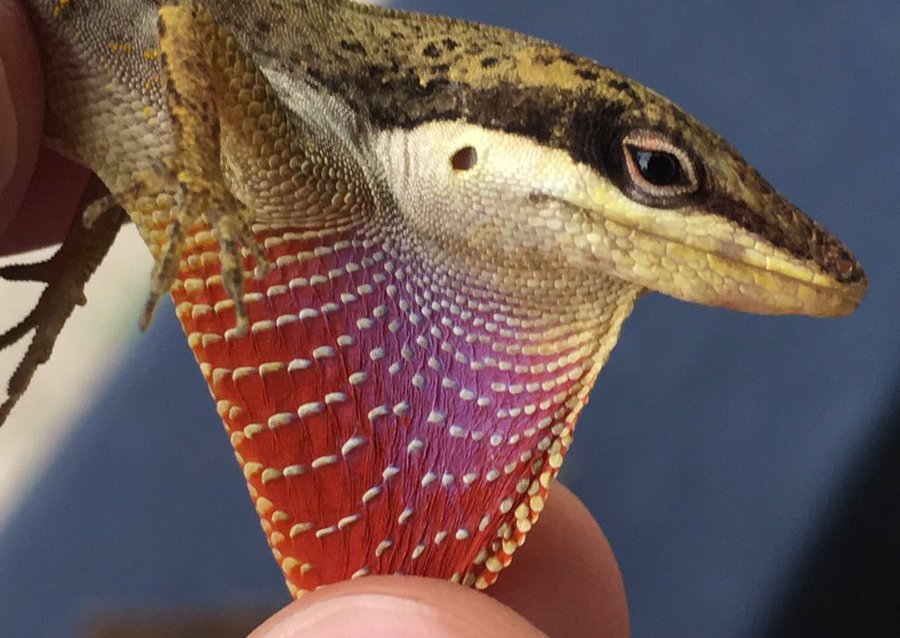Hello!!
It’s me again, but I don’t have an anole this week. This week I actually am going to share some of my personal anole rankings with you. I’m only going to use the anoles I’ve talked about so far for the year and I will give you very good reasons why.
Tell me what yours would be, I’d love to know. I read all your comments.
#7 – Anolis landestoyi, Hispanolian Chameleon anole

Photo: Miguel Landestoy
I love false chameleons and I can’t wait for us to know more about this closely related anole. It has amazing camouflage (lichen is always a good choice).
#6 – Anolis cuvieri, Puerto Rican Giant anole
Juveniles are brown and shift to green when they mature!
#5 – Anolis garmani, Jamaican Giant anole

Photo: Tom McLellan
Crown-giants are one of my favourite anole ecomorphs. I haven’t gotten the chance to see one in person, but growing up on an island with iguanas, large green lizards have a special place in my heart. The Jamaican Giant anole also shares its territory with other males for some time.
#4 – Anolis agassizi, Mapelo Island anole

Blue feet, permanently erect crest (on large males), and beautiful spotted patterning make this anole visually striking. Also of note is its weird interest in the colour orange. Why? Who knows, but I will gladly research this quirk if anyone wants to fund that.
#3 – Anolis lucius, Slender Cliff anole

Photo: Shea Lambert
Built-in sunglasses will take you pretty far in life, especially if you’re a cave dwelling lizard (possibly).
#2 – Anolis equestris, Cuban Knight Anole

Photo: Karl Guyton II
The largest known anole species! I appreciate this crown-giant, especially the A. e. poitor subspecies also known as the ‘Blue Beauty’.
#1 – Anolis bartschi, Western Cliff anole

More blue feet!
This clever little cliff dwelling anole has a lot of odd or uncommon behaviours that I would love to observe, including communal nesting in rock crevices. Read about the rest of them in the post! They’re definitely a dream study species as well.






![Anolis alutaceus [image] | EurekAlert! Science News](https://i0.wp.com/www.eurekalert.org/multimedia/pub/web/23297_web.jpg?resize=400%2C600&ssl=1)



















